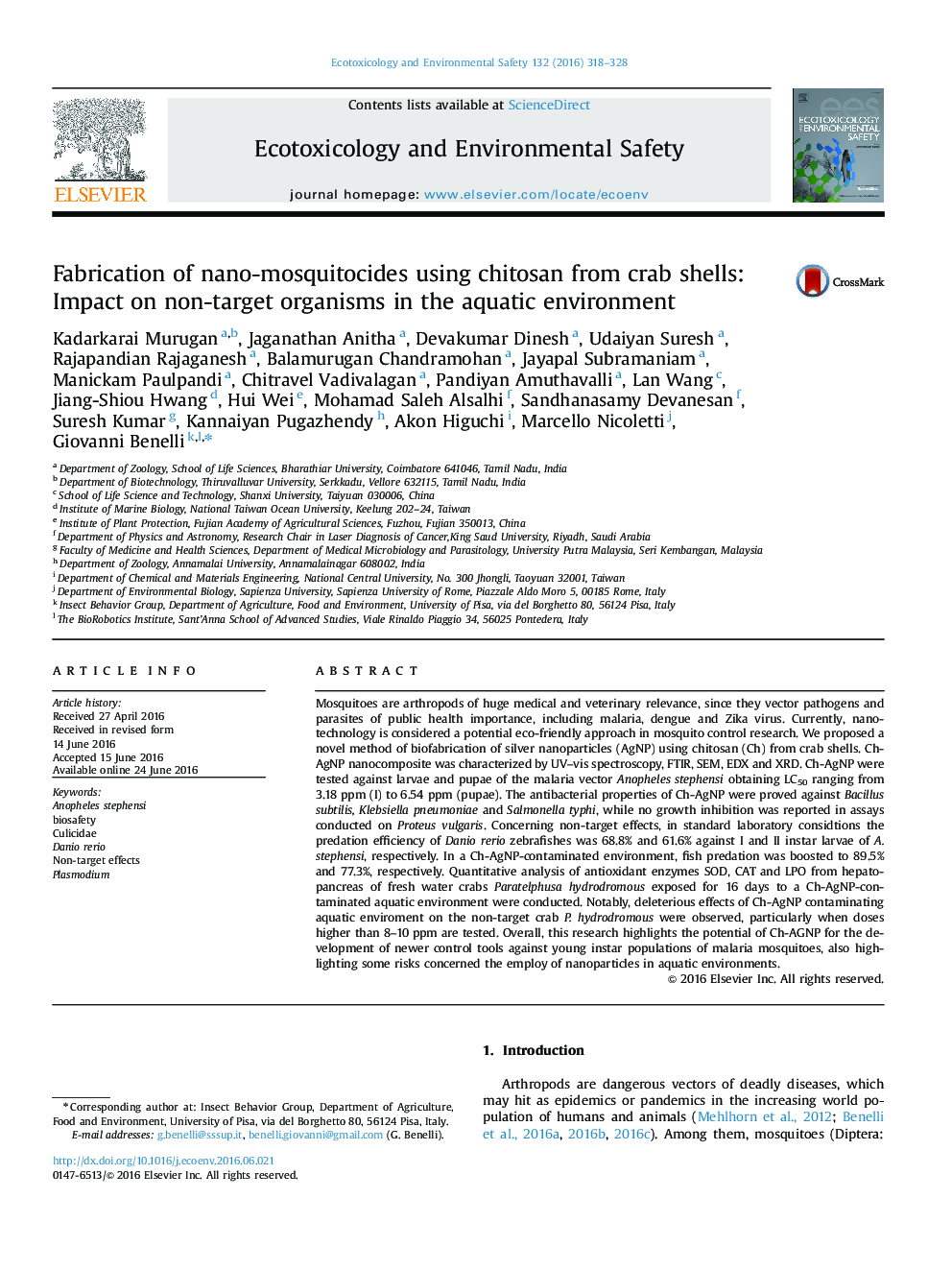| کد مقاله | کد نشریه | سال انتشار | مقاله انگلیسی | نسخه تمام متن |
|---|---|---|---|---|
| 4419114 | 1618931 | 2016 | 11 صفحه PDF | دانلود رایگان |

• A nanocomposite fabricated using chitosan from crab shells was characterized for mosquito control.
• The material was toxic to An. stephensi with LC50 ranged from 3.18 to 6.54 ppm.
• Ultra-low doses of nanocomposite boosted zebrafish predation of larvae.
• The nanocomposite triggered SOD, CAT and LPO responses in non-target crabs.
Mosquitoes are arthropods of huge medical and veterinary relevance, since they vector pathogens and parasites of public health importance, including malaria, dengue and Zika virus. Currently, nanotechnology is considered a potential eco-friendly approach in mosquito control research. We proposed a novel method of biofabrication of silver nanoparticles (AgNP) using chitosan (Ch) from crab shells. Ch-AgNP nanocomposite was characterized by UV–vis spectroscopy, FTIR, SEM, EDX and XRD. Ch-AgNP were tested against larvae and pupae of the malaria vector Anopheles stephensi obtaining LC50 ranging from 3.18 ppm (I) to 6.54 ppm (pupae). The antibacterial properties of Ch-AgNP were proved against Bacillus subtilis, Klebsiella pneumoniae and Salmonella typhi, while no growth inhibition was reported in assays conducted on Proteus vulgaris. Concerning non-target effects, in standard laboratory considtions the predation efficiency of Danio rerio zebrafishes was 68.8% and 61.6% against I and II instar larvae of A. stephensi, respectively. In a Ch-AgNP-contaminated environment, fish predation was boosted to 89.5% and 77.3%, respectively. Quantitative analysis of antioxidant enzymes SOD, CAT and LPO from hepatopancreas of fresh water crabs Paratelphusa hydrodromous exposed for 16 days to a Ch-AgNP-contaminated aquatic environment were conducted. Notably, deleterious effects of Ch-AgNP contaminating aquatic enviroment on the non-target crab P. hydrodromous were observed, particularly when doses higher than 8–10 ppm are tested. Overall, this research highlights the potential of Ch-AGNP for the development of newer control tools against young instar populations of malaria mosquitoes, also highlighting some risks concerned the employ of nanoparticles in aquatic environments.
Figure optionsDownload as PowerPoint slide
Journal: Ecotoxicology and Environmental Safety - Volume 132, October 2016, Pages 318–328